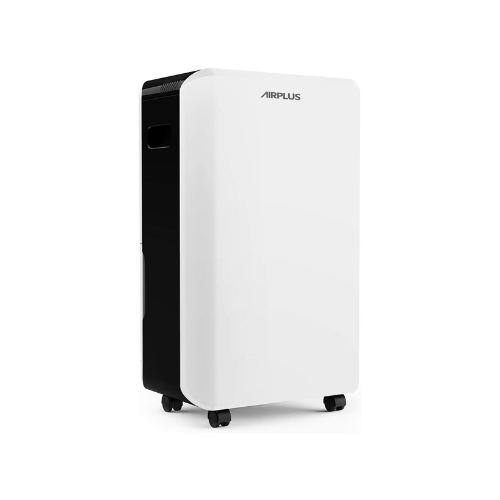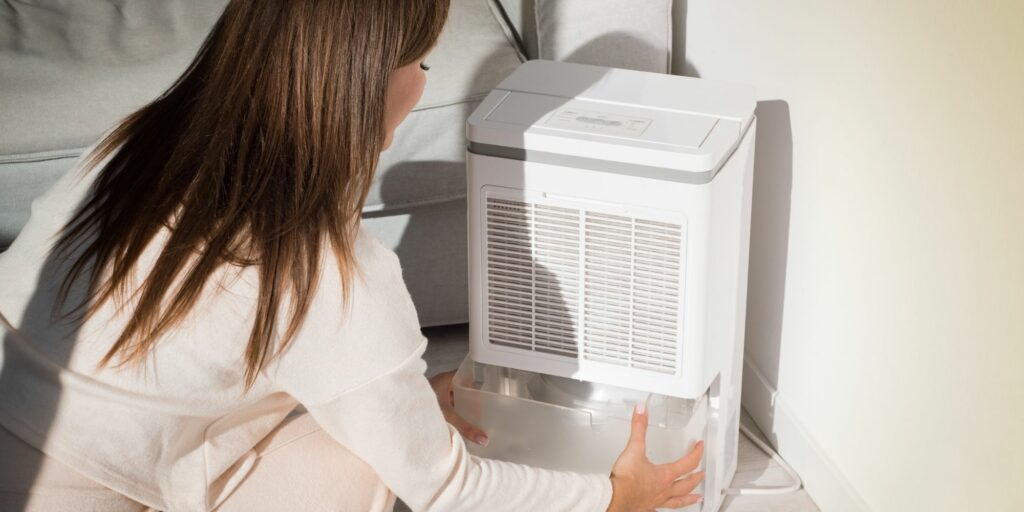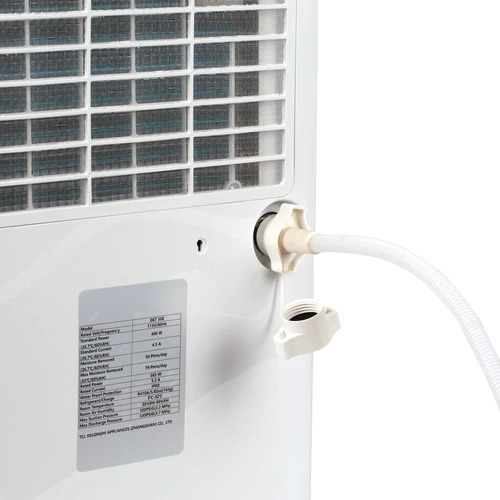Why is my dehumidifier not draining through the hose?
3 Key Takeaways:
🚀 Reasons for dehumidifier not draining through the hose: There could be several reasons why your dehumidifier is not draining through the hose.
🚀 How to fix dehumidifier draining problems: To fix dehumidifier draining problems, you can check for kinks, bends, or clogs in the hose and remove them if you see any.
🚀 How to drain water from a dehumidifier: To drain water from a dehumidifier, you need to unplug the power cord, remove the water bucket, locate the water retention filter.
Even the best dehumidifier to deliver good air circulation needs to be working properly in all aspects. If you are often asking yourself the question, ‘Why is my dehumidifier not draining through the hose?’, it is time to look into fixing it.
A powerful pump mechanism and the draining system will ensure that dehumidifier drains properly and works its magic; by maintaining humidity and temperature, protecting your walls and other property.
Let us learn more about dehumidifier draining problems and how to fix them.
How do you drain water from a dehumidifier?

To drain the water from a dehumidifier bucket only takes a couple of steps. Here are the simple tips that will help you to carry out water draining properly the water in the drain bucket without any leaks.
Dehumidifier’s power cord
The first tip when it comes to draining properly and safely is to unplug the dehumidifier’s power cord. Ensure that the device is disconnected from all electrical supplies completely.
Dehumidifier water bucket
As the next step, remove the water bucket from the unit. The dehumidifier water bucket can be removed easily without the help of any tools. Nevertheless, it is better to check the owner’s manual to make sure you do it correctly.
Drain hose outlet
Take a good look at the dehumidifier and locate its water retention filter to drain the water.
Inserting garden hose into the outlet
You will have to find a suitable garden hose that will fit correctly into the side of the outlet. This outlet will be located near the rear end of the dehumidifier from where the water bucket was removed. This garden hose now attached will serve as the dehumidifier hose.
Most dehumidifiers are capable of making use of household hoses and any generic garden hose. When you have inserted the garden hose, remember that it must be pushed through to the other side until the dehumidifier drain hose is exposed.
Garden hose end
Next, the dehumidifier drain hose or the garden hose end must be pushed into the connector slot of the dehumidifier. Ensure that the drain hose can be attached to the appliance with ease. Another tip to remember is that the size of the drain hose must match the size of the drain port. Draining through the hose method can be achieved only when the hose is properly connected.
When the hose is installed properly, you will have the new drain line dangle freely in the place where the water retention bucket once was.
Hose end to the floor drain
For the last step, you have to snake the other dehumidifier drain hose end to a location that can be used to drain the continual water flow from the unit. This location can either be a drain, or any runoff location like a garden, walkway, etc.
Fix back the bucket
Once all the steps are done, you can simply reattach the bucket and turn on the power.
Why is your dehumidifier not draining water?

Allowing water to drain through the hose might seem absolutely simple. However, sometimes your dehumidifier drain line might have trouble doing this with ease.
Improper installation of drainage hose or not placing the unit correctly, other damage to parts, etc., might prevent water from flowing freely.
Let us look at some tips and reasons that will help to drain a dehumidifier.
1. Clogged hose
One of the common reasons why dehumidifiers have trouble with draining water is clogged hoses. The first step to follow when dehumidifier drainage is not working properly is to check for a clogged hose.
Bent and clogged hoses will prevent water from flowing freely or draining. They will simply collect near the unit and pool around the unit. It is recommended that all dehumidifiers, whether they are a small dehumidifier or a large one, will benefit from regular cleaning of all parts, especially the nozzle where debris can collect.
2. High hose end
You might know that the hose drain setup relies on gravity to operate. In order for it to drain setup work properly, you must ensure that the end of the hose is below the dehumidifiers base or in level with it.
Since this relies on gravity for draining, you must connect the drain hose for easy flow downward. The dehumidifier can be placed on a raised platform to aid gravity. Remember that the drainage hose must flow downward by a foot more before it reached the bucket.
3. Full tank
In recent years, most dehumidifiers are manufactured with the tank full indicator. The tank full indicator will notify owners to empty the bucket when needed. If the bucket is filled with liquid, it is not going to be able to drain properly.
If you notice that the dehumidifier bucket is not full, and the hose had been routed downward, yet it isn’t draining, you must check the nozzle or drainage spout if any debris is blocking the unit from continuing to empty into the sink or where the connection is.
4. Standing water
If the hose has been routed into a sink or standpipe that has standing water, this is going to obstruct the flow of water. Due to the pressure difference built-in by the standing water, the water from the unit will not be able to flow. This pressure created is an obstruction to the drainage hose to work properly. If there is an excess hose, cut it rather than letting it contribute to standing water.
Adjusting the drain hose outlet or output correctly into the floor drain will remove this problem.
5. Improper installation of the hose adapter
Another reason for the dehumidifier not draining through the hose adapter not being installed correctly. Checking if all the pieces of the adapter are installed properly and mending any leaks around this area will prevent water from pooling near the unit.
Similar problems with draining will arise if there are chances of other damage or a faulty connection with the dehumidifier’s power cord. Electrical accidents and injuries can be avoided by fixing the damage at the earliest. Repair any other damage to parts or the connect itself to prevent leaks in and around the sink.
How to fix dehumidifier draining water?
If the question ‘Why is my dehumidifier not draining through the hose’, is on your mind, you must pay attention to the dehumidifier drain hose. You must check, all factors like the sump pump, drain cover, float switch of the bucket, etc.
To have the dehumidifier drain through the hose, make sure the hose is routed downwards and free from bends, blocks, clogs, etc.
What to do when water collects in bucket instead of draining outside?
If the dehumidifier not draining through the drain hose, it could be excess hose or clogs, or other issues with the hose connect of dehumidifiers. Removing all obstructions and sending the dehumidifier for repair will resolve the problem.
Gravity drain Vs. drain pump

A gravity drain system is the cheapest way to remove excess moisture from the air and to remove the collected water. The drain port or drain sink must be placed at a lower position from the unit since this drain setup relies completely on gravity.
Placing the dehumidifier drain hose outlet at a higher position will ensure the working of this system. Install the unit on a raised platform or shelf and you can have the unit continuing to drain through the hose.
To drain a dehumidifier via gravity you can connect the drain output into the sink or runoff area.
The drain pump method requires the least effort from the owner. For the sump pump method, you can have either an internal condensate pump or an external condensate pump.
Internal Condensate Pump
An internal condensate pump will be built into the device. For a built-in pump or internal condensate pump, you only have to find an output for the water draining from the internal pump. Water from the internal pump can be drained into a dehumidifier drain bucket or sink but does not require to be routed downward.
External Condensate Pump
In an external condensate pump, the drainage hose from the drain port will connect to a floor drain. Unit continuing to remove water will be taken care of.
A relatively small dehumidifier with a built-in pump or sump pump is sufficient to ensure air space is devoid of moisture for a `limited area. However, an external drain pump can be attached to any unit without a built-in pump.
FAQ Section
1. How do you drain a Frigidaire dehumidifier hose?
To drain Frigidaire dehumidifier, place the washer into coupling and screw in the hose coupling onto the unit or pan, and place the end of the drain hose into the drain.
2. Do crawl space dehumidifiers need to be emptied?
Even a relatively small dehumidifier will have to be drained every day, and this is how most dehumidifiers operate. If a drain reservoir isn’t an option drain through the hose will be used.
Any best dehumidifier model with a powerful pump or gravity draining option can be used.
3. How do you unclog a dehumidifier?
To unclog a dehumidifier:
1. Turn off the unit and unplug it.
2. Empty the reservoir and clean it with detergent.
3. Air dry or vacuum dry the reservoir and air filters and bucket filter completely.
4. Connect the unit and turn back on the device.
4. How do you auto drain a dehumidifier?
Draining through the hose automatically can be done with dehumidifier drain hose gravity drain, external and internal condensate pump.
5. Can a dehumidifier pump water up?
Condensate pumps can push water up to 15 feet with a dehumidifier setup in the basement.
Wrapping Up
We have reached the end of the article. Hope you found your answer to the question, ‘Why is my dehumidifier not draining through the hose?’.
Let us know how you protect your home, walls, and furniture completely from temperature fluctuations and ensure the dehumidifier drain hose works efficiently. Research all the best dehumidifier basement reviews to learn how to keep air space filled with good air circulation without standing water.

About The Author
Olivia — a self-confessed air quality addict — is a home climate enthusiast, fresh air advocate, and someone with deep personal experience and knowledge about mold extermination. Her work was mentioned in countless notable humidity publications. Previously she was an editor at Mold Remediation.